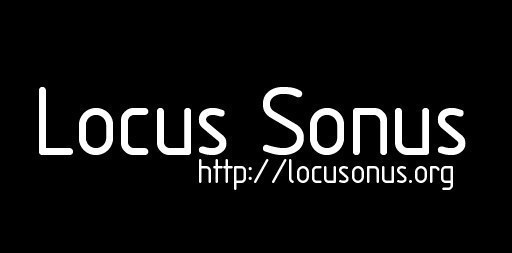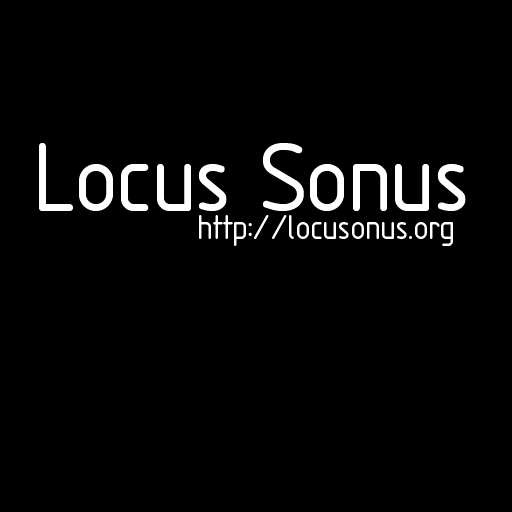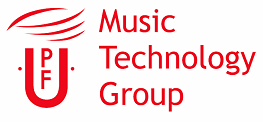|
Menu : R & D
Menu : Valorisation
• 2012 - European Project
Education & Culture DG Programme (2007-2013)
Multi-annual Co-operation Projects
3 Oct. 2011
(in progress)
Partners
- SARC Sonic Arts Research Center Queen's University Belfast
- Institute for Sonic Arts Research (IRZU) (Slovenia)
- French sound research lab (Locus Sonus)
- Norwegian National Centre for Technology in Music and the Arts (NOTAM)
- Multi media association (Auropolis) (Serbia)
- contemporary art museum and foundation (Serralves) (Portugal)
- Music Technology Group (MTG-UPF) Universitat Pompeu Fabra Barcelona (Spain)
Aims & Objectives
SINC
Sonic Identities | Networked Communities
- To better understand cultural identity through sound in communities across Europe
- To develop cutting-edge sound art practices/works that address European cultural
identity
- To develop connectivity between several European communities through sonic
activities
- To understand the life of each community, its cultural and sociological identity and the
identities of its people through sound and collaborative sonic creations
Specific Aims
- To identify and record culturally specific sonic profiles and make them available
through freesound.org
- To develop a methodology in order to identify best practice for the development of
the sonic profiles across the SINC consortium
- To place sound at the centre of creative engagement with cultural identity through
the guidance of a world authority on creativity in contemporary society (Charles
Landry)
- To offer training sessions and workshops in each partner’s location, involving local
communities (school children, independent artists, disadvantaged communities as
well as the ageing population)
- To produce high profile sonic art works (including installations, distributed music
performances, networked streaming projects, festivals, collaborative compositions)
linked by a well-researched methodology
- To raise the awareness of sound with the general public through regular
presentations
- To document all SINC outcomes by means of a website and e-book
Research Questions
- How can we gain a greater insight into European cultures through sound?
- How can such insights contribute to the development of cross-cultural collaborations
in a EU context?
- How can we assess the effectiveness of sound for understanding cultural identities?
- How integral are local communities for an exploration of a culture-specific sound
environment?
About the Project
The SINC project will use sound as a means for understanding cultural identities across a
network of communities in Europe. SINC will provide training sessions for local communities;
it will allow for the exchange of skills and distribution of best practice through the use of the
consortium’s combined expertise as well as through the use of new audio technologies.
Commissions and workshops across the consortium will allow for the mobility of young
professionals, the active engagement of people in the creation of new sound practices and
performative works that address cultural identity.
SINC is a project that has at its heart a mutual understanding of different working
approaches, people and cultures, aiming to enrich each communities’ environment through
cultural actions and exchange.
SINC’s network of partners has great expertise in cultural production, sound art and
community engagement. The coordinator, a world-leading sound research institution in the
UK (SARC), is joined by Slovenian Sonic arts research institute (IRZU), French sound
research lab (Locus Sonus), Norwegian National Centre for Technology in Music and the
Arts (NOTAM), Serbian multi media association (Auropolis), Portuguese contemporary art
museum and foundation (Serralves) and Spanish Music Technology Group (MTG-UPF).
SINC Context
With fast-paced societal change and increase in mobility within Europe and worldwide
comes a necessity to engage with notions of cultural identity and how this is shaped by
today’s world. The mediated nature of many social and cultural interaction places the use of
media (images, videos, sounds, text) at centre stage as we move from a culture of media
consumers to media producers, evidenced by numerous youtube phenomena. The role of
sound gains particular relevance, as new ways of distributing media might resemble a return
to aural cultures in which ideas, memories, stories and knowledge are constantly being
shared across communities.
SINC proposes to examine cultural identity by collecting, transmitting and archiving non-
urban and urban sounds, while engaging with local communities, their sonic memories and
aural understanding of their environments. SINC will
engage local sound artists and archivists to record and collect specific sounds from within
their cultures. An archivist will focus on verbal histories and memories of the chosen
communities, specifically taking into account voices, accents and sound histories of each
specific community. These sounds, collated in the Freesound.org repository will be used as
a basis for many of SINC’s creative outputs.
SINC thus brings collaborative artistic creations into a EU context, while aiming to create a
network between seven European communities with highly diverse creative and technical
expertise.
|








